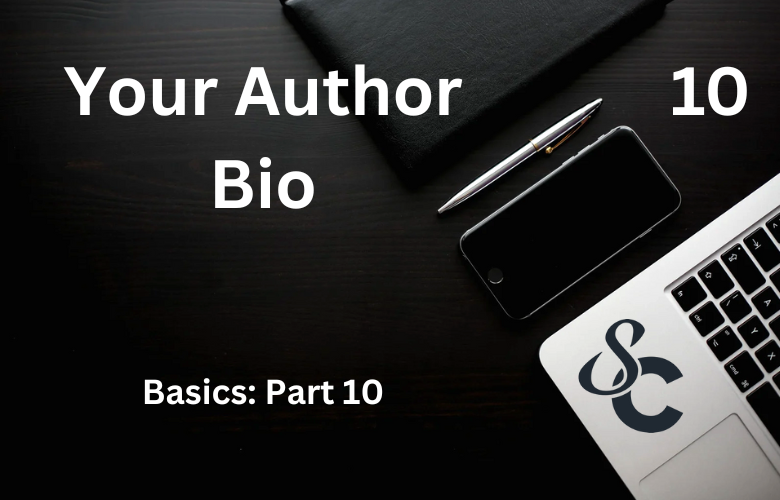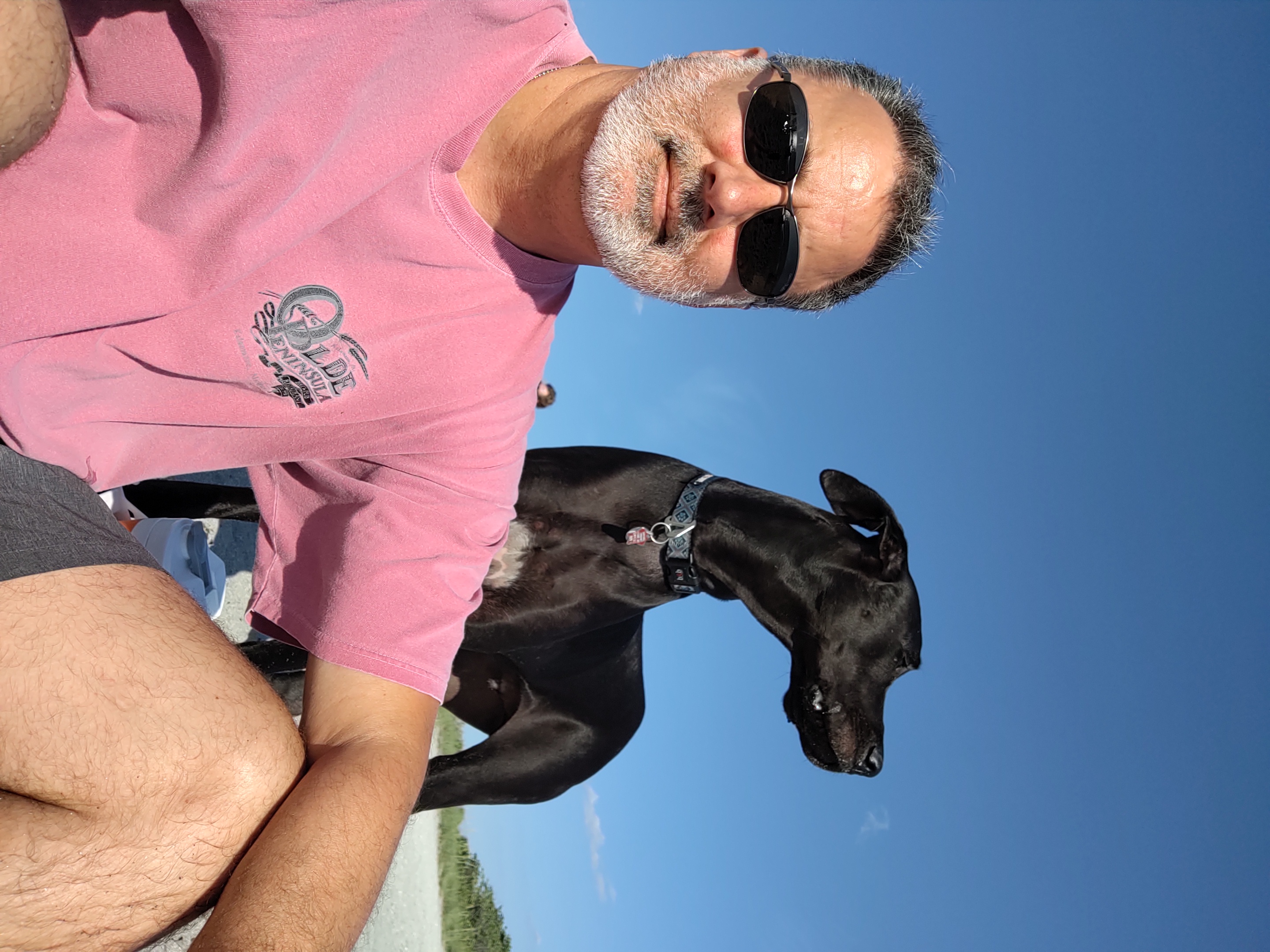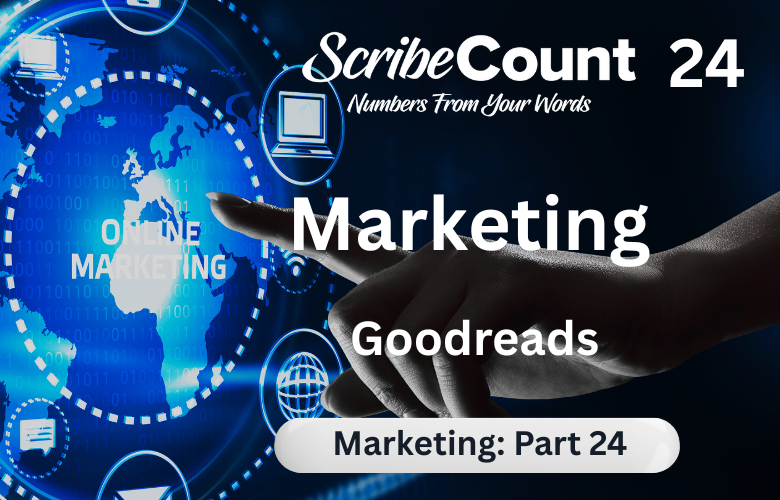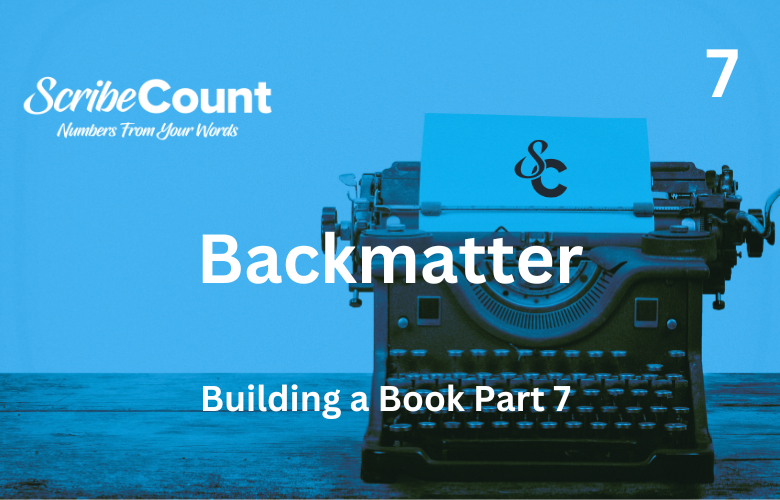Your Author Bio
Writing an author bio can be a frustrating experience. On the positive side it's content about you, a subject you know already. On the negative side, it’s content about you, which many authors have a problem discussing. On top of that, you’ll need to produce several versions.
Several versions?
Yes, I’m afraid so. Your bio will appear in a variety of places and the length varies by location.
The Three Types of Author Bio
The Short Bio
You’ll need a short bio, one that’s only 1-3 sentences long. This is used primarily for social media and websites. The bio you see at the bottom of this post is an example of a short bio.
The Medium Bio
This bio is usually a paragraph long. You’ll find these bios on the back cover of books and in marketing materials such as sell sheets and convention booth posters. It can also be used on sales platforms that offer an “Author Page”.
The Long Bio
The long bio is usually found in the “About Me” section of an author's website. This bio expands on the two smaller bios and offers a more personal message, one that the readers can identify with. This is also the bio an author would use when querying literary agents.
The Goal of an Author Bio:
Regardless of its length, all Author Bios have one common goal:
To compel the reader to buy your book.
Your author bio should provide enough information to pique the reader's curiosity, establish a connection, and leave them wanting to know more. It tells your potential readers that this book was written for them. If done right, your author bio, combined with your author pic, will help you sell more books.
That said, your bios are not something you want to rush, nor do you want to put them off until the day they are suddenly needed. Like your picture and book cover, they are a first impression; getting them right is important. Think of your bio as a “hook” that draws the reader in.
Where to start?
Start with the long bio. This is a one-page story about you. It will contain the most information of the three and once you have it done and polished it will be easier to edit down into the two shorter versions. You should plan on several rounds of editing and the outside opinions of some readers who know you.
Don’t confuse your bios with a resume or CV. They are not a blunt list of accomplishments or a documented tally of your credentials. A bio is more of a short story, one in which you are the only character.
Who is this bio for?
Before you start writing think about who you are writing to. Knowing what kind of reader your genre attracts is important. You are trying to connect with them and should tailor your words to that specific audience. You’ll want to find common ground related to your book's subject matter. If your genre is fantasy and you grew up playing Dungeons and Dragons, mentioning that might be a way to do so. If you write about action thrillers then mentioning your military background will help.
Ask yourself what your book is about and who you wrote it for, then write to that person as if they just asked you about yourself. You want them thinking “This is the type of writer I like to read”.
The Tinder Effect
Your author bio is your attempt to connect with the reader, and who knows more about making connections than Tinder? While the end goal at Tinder may be different, the content of your bio is very much the same. Here’s some data from Tinder about what works and what doesn’t.
The 70:30 ratio
According to the researchers, the most successful online dating profiles have a 70:30 ratio — 70 percent describing yourself, and 30 percent describing what you’re looking for. Authors can adapt this information to fit their targeted readers.
Avoid flowery prose.
Researchers found that simple language makes you more memorable, so highlighting the things that make you interesting will help your bio and book stand out more than providing a writing sample. This is not the place to show off your creative writing skills.
Injecting Humor
Researchers also found that if you can get your potential match to pause and think about what you said in your bio they are more likely to connect. Get them to laugh and you’re that much closer.
Avoid bragging
Academic achievements may work for certain non-fiction genres, but most readers find your personality more attractive than your IQ or GPA. If you feel that a little bragging will help, be humble. If you’d like to project your adventurist side “Jumps out of perfectly good airplanes” works better than “I have 282 parachute jumps”.
Share your Hobbies and Interests
More than half of Tinder users report that potential matches who share their hobbies and interests in their bio are more likely to catch their attention. The same amount were more likely to consider someone if their dating app profile gave some insight into their personality.
Check your spelling and grammar.
Research also reveals that potential matches are turned off by bad spelling and grammar in someone's bio, so avoid the latest slang, use punctuation, and stick with clear concise language.
This all boils down to making the right impression. Your potential readers won’t care about how many hours you put into your bio, but they will care about whether your bio made a compelling reason for them to read your book.
Your location.
Your location is necessary for platforms like Tinder, but not so much for an author bio. Once considered a necessary part of any bio, mentioning where you live is falling out of favor. This is becoming more of a problem in the internet era. According to his bio, Andy Weir lives in California. How that information impacts the science fiction he writes is a mystery, but his publisher felt the need to include it. Unless the location you live in is somewhat related to your book it’s best to leave it out.
Five Key Elements
All bios should have five key elements within them.
1. A great opening line
I’m a philosophy dropout with a PhD in Literature. – Derek Murphy
Derek does an excellent job with his opening line here. Not only does he manage to cross off the first three items in one sentence, but he does so by poking fun at himself.
“Rick Mofina is a former journalist who has interviewed murderers on death row,”
Not only does this line grab your attention it immediately establishes the author’s credentials. The reader is immediately hooked and wants to know “What else has this guy done!?”.
“#1 New York Times bestselling author Julia Quinn loves to dispel the myth that smart women don’t read (or write) romance.”
Julia Quinn starts her bio with a challenge, and the reader is prompted to see where it goes.
These are three great examples of hooking the reader early. The opening line makes you want to read the next line, and the next, and soon everything the author has penned.
2. Credentials
Credentials often come in three forms: Awards, Education, and Life Experiences. A good bio finds a way to include all three.
New authors will not yet have awards to list so many will revert to education that relates to their writing. “John Smith graduated from Random House University with a degree in emergency medicine and now writes Medical Thrillers.”
Those who lack either, or simply don’t have a correlation between their education and their subject matter, will instead list things that are related. “Jane Doe is a lifelong reader and writer of Epic Fantasy and is President of the Crooked River Renaissance fair.”
Establishing a “Been There-Done That” in the author's bio will often establish a connection with the potential reader better than any list of accolades.
3. Interests
Shared interests are another way to establish that connection with the reader. However, it's important to keep those interests within the realm of the Plausible. “Peirce enjoys sailing on his yacht, collecting Faberge eggs, and driving his Ferrari.” While all three may be true, these are not things that most readers can connect with. “When not writing Peirce enjoys spending time on the ocean, visiting museums, and driving too fast” works better.
4. A call to action.
This can be generalized or specific and tailored to fit whatever medium it is being presented in. A bio on the back flap of a hardcover jacket cannot be updated, so it should have a call to action that will work for the life of the author.
“To learn more about Jack Smith and his latest novel visit him at www.fakeadress.com.”
If the bio appears in a guest blog post or maybe a social media story it might say:
“You can find Jack’s latest release “The Dark Corner” at Bookstore.com”
5. A place to find out more about you.
This can be as simple as a series of Social Media buttons, a link to the author's website, or an invitation to join the author's mailing list. The degree of boldness is entirely up to the author and the medium they are using that particular bio at.
Other Tips for creating a great author bio:
Word Count
Keep the word count under control. For the short bio you should stay under 140 words. This is to fit nicely in the average-size footer or online space. (Amazon doesn’t have a specific limit, but they recommend 60-90 words. Pinterest limits you to 160 words) Concentrating that one-page bio down to 140 words can be a challenge, but once finished it will tell as much about you in as few words as possible. Keep in mind that the most important message is the one that is relevant to your reader.
Avoid bragging.
Again, try to avoid speaking too highly of yourself. Be modest. Be humble. State your accomplishments, but don’t go overboard. Readers will skip right over the letters after your name. It's better to poke fun at yourself than it is to crow.
Write your bio in the third person.
For most writers, this is just plain weird. Referring to oneself as “He” or “She” seems against the grain, but it's necessary if you are writing “About the author”.
Tone.
Adjust your bio’s tone to fit the platform you plan to use
it on. You may even wish to create different bios for Facebook, Twitter/X,
Instagram, LinkedIn, and Pinterest. You’ll want to adopt a more serious tone
with LinkedIn for example yet have a more casual tone for FaceBook.
Keywords
Once you have written your long bio it’s a good time to go back and look for keywords you can utilize for optimization purposes.
Keywords relate to the WHO, WHAT, WHEN, WHERE, WHY, and HOW of what your writing has to offer the reader. This all relates to Search Engine Optimization (SEO) and it's an important way to get Google to like you. If you want your bio to garner attention from Google, keywords are critical.
So edit your long bio with keywords in mind. If you have done a good job of writing it they will be there waving at you.
When you parse that long bio down into its shorter versions keep as many keywords as you can within the text.
Updating your bio.
The better the bio, the less often you will need to update it.
There are a variety of reasons to do so, both good and bad.
You’ve won an award. You’ve published a new book. Your book got optioned for a movie. A celebrity gave you a great review. Did you move? Get divorced? Obtain a position in academia? Earn a degree related to your writing? Did you die?
All of these are reasons for updating your author bio.
But is it worth the time to do so?
If the bio is on your website this is a fairly easy task. If it's in the backmatter of every book you published it can be daunting. You’ll need to update the file, reformat it, take down the previous book file, load the new one, and then wait for the sales platform to approve and publish it. The work and lost sales time may not be worth the effort. There’s also the risk of a glitch holding up the process. Each author will have to do the math themselves and decide.
You have your three bios written. Where do they go?
Short Bio
This bio goes at the footer of any blog post you’ve written, at the bottom of any social media post, and in various forms of marketing.
Medium Bio
This bio goes on the back of your paperback covers and inside the rear jacket of your hardcovers. It can also be used on your website as an intro to the long bio. It’s also used on sale platforms that offer an Author Page.
Long Bio
This bio appears on the “About Me” page of your website. It's also used when querying agents or editors.
In Conclusion
A good set of bios, combined with a stellar author pic, and links to your website and social media platforms, are a key tool when building connections with potential readers. You’ll want to create quality bios and update them regularly to keep them relevant to your position in your publishing career.




